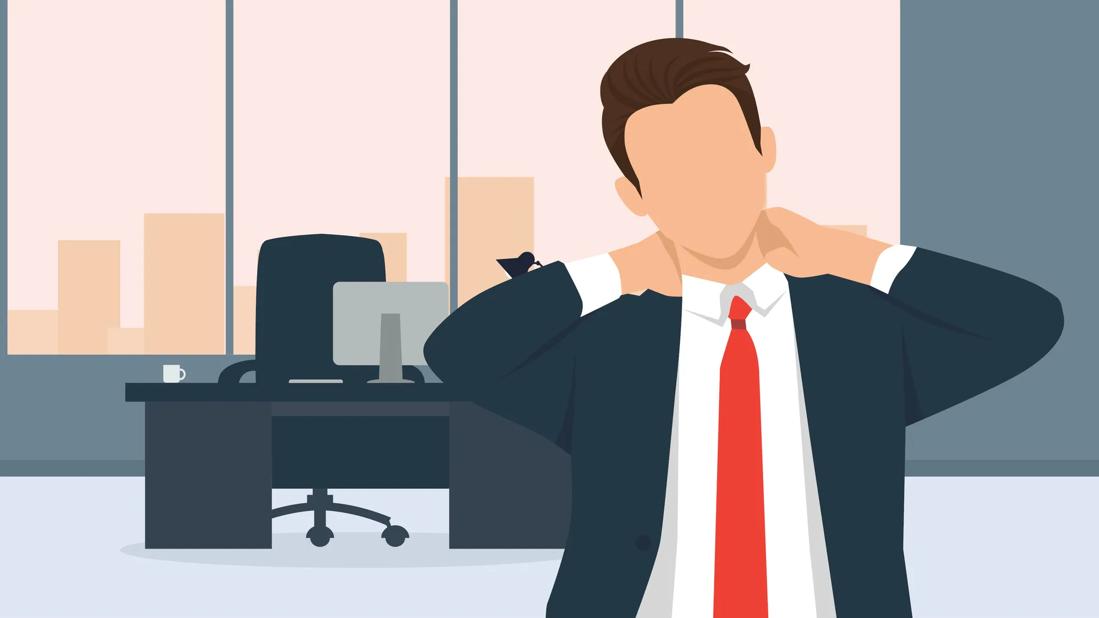By focusing directly on your pain points, you may find short- and long-term relief with this type of massage

Muscle knots have a habit of popping up unexpectedly. In the crook of your neck. The back of your thigh. That small spot located in your lower back or right between your shoulder blades.
Advertisement
Cleveland Clinic is a non-profit academic medical center. Advertising on our site helps support our mission. We do not endorse non-Cleveland Clinic products or services. Policy
When muscle knots pop up, you might try and push through the pain or rub it out in hopes of finding relief. But you could probably benefit from a trigger point massage to get at the root cause of your pain.
Chiropractor Chad Adams, DC, explains what trigger point massages are, how they can benefit you and how you can do them on your own at home or with the help of a massage therapist.
Trigger point massage uses myofascial release therapy techniques to apply direct pressure to trigger points to help relieve tension, stress and pain. Trigger points are stiff, localized muscle cramps that occur in your fascial tissue.
You can think of fascial tissue like fibrous nets that connect your muscles to your bones and wrap around virtually every structure and organ in your body. As a result of intense stress, tension or repetitive activity, these nets can become tightly wound and taut, causing knots or nodules to form underneath the surface of your skin.
Trigger points pop up in a variety of ways. They can irritate your lower back if you’re hunched over a desk working all day. They can appear in your arm or your elbow if you over-extend it while playing sports. They can even affect your neck if you’re looking down at your phone for long periods of time while sitting in uncomfortable positions.
Advertisement
Once formed, these trigger points can produce sudden, intense radiating pain or even refer pain to other areas of your body. The pain can be so intense that it can even restrict your ability to move freely.
“A trigger point is a muscle spasm — a signal from the brain saying, I’m not sure what to do, so I’m going to freak out and be tight,” says Dr. Adams. “Those tight spots are cries for help because we weren’t designed to do the same activity over and over, every day.”
By applying direct pressure to your trigger points and massaging those areas, you can help loosen the tight fibrous muscle that’s causing pain. With pain relief comes other benefits, including:
“Pain can seep into every aspect of life, from disrupted sleep to impaired focus,” notes Dr. Adams. “Even a simple intervention like a trigger point massage can significantly enhance someone’s well-being by restoring function and reducing stress.”
The goal of a trigger point massage is to work out the kinks. It’s like kneading dough. You have a rough patch that just needs to be smoothed out so it won’t cause you any further irritation. But if you’re going to give yourself a trigger point massage, you also want to reduce your risk of injury. In fact, it may be more beneficial to work with a licensed massage therapist who knows how to give a trigger point massage safely.
“Working with a massage therapist not only ensures safety, but also allows you to address deeper, interconnected issues, particularly when trigger points stem from chronic conditions or repetitive strain,” says Dr. Adams.
Additionally, we all experience pain differently. What you think might be a trigger point could potentially be some other underlying cause of pain. If you’re experiencing any chronic pain beyond a few days or weeks, you should see a healthcare provider for a diagnosis.
“Too often, people ignore the signals from their bodies. Pain is the warning light on the dashboard,” he adds. “Your body is telling you it’s time to make a change.”
If you’re indeed dealing with a trigger point issue, the following steps may help you feel better.
You want to search for areas where your muscle feels tight, stiff or you have a reduced range of motion. Normally, trigger points are sore spots that feel like a small marble under your skin.
Using your fingers or thumbs, apply firm pressure to your trigger point for up to 90 seconds, massaging the area as firmly as you feel comfortable. You can also use foam rollers or massage balls to get a wider range of coverage.
It’s important to note that this process may cause some discomfort at first. It’s perfectly normal to feel sore after a massage, but you don’t want to cause yourself more pain, especially if it seems to get worse the more you put pressure on the area.
Advertisement
“Discomfort is part of the process,” explains Dr. Adams, “but intense pain is not. If you feel a sharp pinch or tingling, you might have an injury that goes beyond muscle tension. In that case, you want to make an appointment with your healthcare provider.”
It takes time to loosen tight, fibrous tissue and work through muscle knots. You want to repeat the 90-second process for up to three to five minutes at a time, ideally, as often as five or six times a day until you begin to regain more fluid motion and feel more comfortable.
“This process needs to be part of your daily routine if trigger points are causing you pain,” advises Dr. Adams.
After each mini-massage, your muscles should feel looser. Over time, regular trigger point massages can help bring longer-lasting relief.
But also think about what you can change in your environment to make your muscles happier. Could a better desk chair help your aches and pains? Can you take breaks to stretch or exercise throughout the day?
There are plenty of other ways to get rid of muscle knots when you look at it from a holistic level. Drinking water, for example, improves muscle movement. Finding ways to reduce stress in other areas of your life also helps improve the way stress sits in your body. And using a massage gun on the areas around affected injuries can also provide short- and long-term relief.
Advertisement
If you’ve tried making these changes, but the knots keep returning, it might be time to call in the pros. Consider seeing an expert such as a chiropractor, massage therapist or physical therapist for additional ways to find relief.
“Integrating chiropractic care into your routine provides a broader perspective on musculoskeletal health, helping you prevent recurrence and achieve balance in your body and life,” says Dr. Adams.
Advertisement
Learn more about our editorial process.
Advertisement

Medical massage is tailored to your health needs to help you recover

This treatment may reduce stress, relieve pain and allergy symptoms, and help with sinus pressure

The same things you do to treat sore muscles after exercise can help treat soreness after a massage

Focused on stretching and yoga poses, it can increase flexibility and ease back pain

These percussive devices can help relax muscles when seeing a masseuse isn’t an option

A whole-body practice that undoes the effects of gravity and repetitive motions

A massage can release stress, soothe muscles and alleviate pain

Start having sex about 72 hours before ovulation, then at least every other day during your fertile window

Attachment theory suggests that your earliest relationships shape connections throughout your life

It isn’t a recognized mental health disorder, but research shows that problematic social media use can negatively affect your mental health, self-esteem and sleep